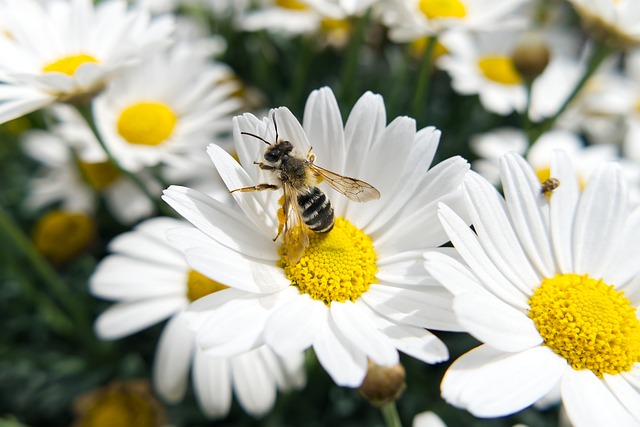Wood boring insects like beetles and termites threaten properties, but professional wood pest control offers effective, eco-friendly solutions. Commercial services focus on inspections and systematic removal, while residential treatments include preventive measures and sealing entry points. Advanced methods disrupt beetle life cycles, and growing interest in green practices leads to non-toxic repellents and natural barriers. Regular maintenance through inspections and proper ventilation is crucial for long-term protection against wood boring insects and costly damage.
In the realm of wood preservation, tailored solutions are key to addressing the insidious threat posed by wood boring insects (WBI) like termites and beetles. These pests can cause substantial damage to both residential and commercial properties, necessitating effective yet sustainable strategies. This article explores professional wood pest control methods, focusing on distinguishing traditional techniques from eco-friendly alternatives. We delve into tailored solutions specifically designed for diverse spaces, offering implementation tips for long-term protection against these relentless invaders.
Understanding Wood Boring Insects and Their Impact
Wood boring insects are a common and significant concern for both residential and commercial properties alike. These pests include beetles, termites, and other wood-feeding insects that can cause extensive damage if left unchecked. They bore into wood structures to lay eggs, and their larvae feed on the wood, leading to weakened and deteriorated materials over time. This not only compromises the structural integrity of buildings but also poses a serious risk to health and safety.
Professional wood pest control is essential for effective wood boring insect removal. Specialized treatments, such as eco-friendly solutions, can target these pests without causing harm to humans or pets. Commercial wood insect removal often involves systematic inspections and tailored strategies, ensuring that every part of the structure is treated. For residential properties, these treatments may include preventive measures like sealing entry points and applying barrier treatments. When it comes to wood boring beetle extermination, professionals use advanced methods to eradicate adult beetles, disrupt their life cycles, and prevent future infestations.
Traditional vs. Eco-Friendly Wood Pest Control Methods
In the realm of wood preservation, the battle against wood boring insects has traditionally relied on harsh chemicals and pesticides. These methods, while effective in removing wood boring beetle infestations and preventing wood rot, can leave behind residuals that may pose risks to human health and the environment. As a result, there’s a growing demand for eco-friendly wood insect solutions that offer both residential wood pest treatment and commercial wood insect removal without compromising safety or effectiveness.
Compared to conventional methods, eco-friendly alternatives focus on natural barriers, biological control, and non-toxic repellents. These pest control for wood boring insects techniques not only protect structures from damage caused by wood boring insects removal but also promote sustainability. Professional wood pest control services now offer tailored solutions that address specific insect issues while minimizing environmental impact, making them ideal choices for those seeking both effective protection and green practices.
Tailored Solutions for Residential and Commercial Spaces
In the face of persistent wood boring insects like beetles and termites, tailored solutions are essential for both residential and commercial spaces. Professional wood pest control services offer a comprehensive approach to address these issues effectively. Through advanced techniques and eco-friendly methods, specialists can safely and successfully eliminate wood boring insects while preserving the integrity of structures. Tailored treatments consider the unique characteristics of each property, ensuring targeted and long-lasting results.
For residential properties, these solutions focus on protecting valuable wooden elements within homes, from historic beams to modern furniture. Commercial spaces, meanwhile, require robust strategies to safeguard expansive wood structures in buildings, infrastructure, and outdoor features. Eco-friendly insect control options are increasingly popular, prioritizing the use of non-toxic substances that minimize environmental impact without compromising efficacy.
Implementation and Maintenance Tips for Long-Term Protection
Implementing tailored wood preservation strategies is just the first step; ongoing maintenance is crucial for long-term protection. Regular inspections are essential to identify any signs of wood boring insects, such as beetles or termites, which can infiltrate and cause significant damage over time. It’s recommended to schedule professional assessments every few months, especially in areas prone to pest activity. During these inspections, experts can detect early infestations, recommend appropriate treatments, and provide advice on preventing future issues.
For residential properties, maintaining a clean environment is vital. Remove any wood debris from your yard and ensure proper ventilation in attics and crawl spaces. In commercial settings, regular cleaning and sealing of potential entry points are essential. Eco-friendly insect solutions, including natural repellents and heat treatments, can be effectively deployed without compromising health or the environment. Consistent monitoring and prompt action will contribute to a durable wood preservation system, safeguarding structures from costly repairs due to pest damage.
In light of the potential devastation caused by wood boring insects, adopting tailored, eco-friendly solutions for both residential and commercial spaces is essential. Traditional methods often rely on harsh chemicals, but professional wood pest control specialists now offer advanced techniques like heat treatment and targeted applications to effectively eliminate pests like wood boring beetles without damaging the environment. By combining these innovative approaches with proper implementation and maintenance, long-term protection against wood insect infestations can be achieved, preserving structures while minimizing ecological impact.
